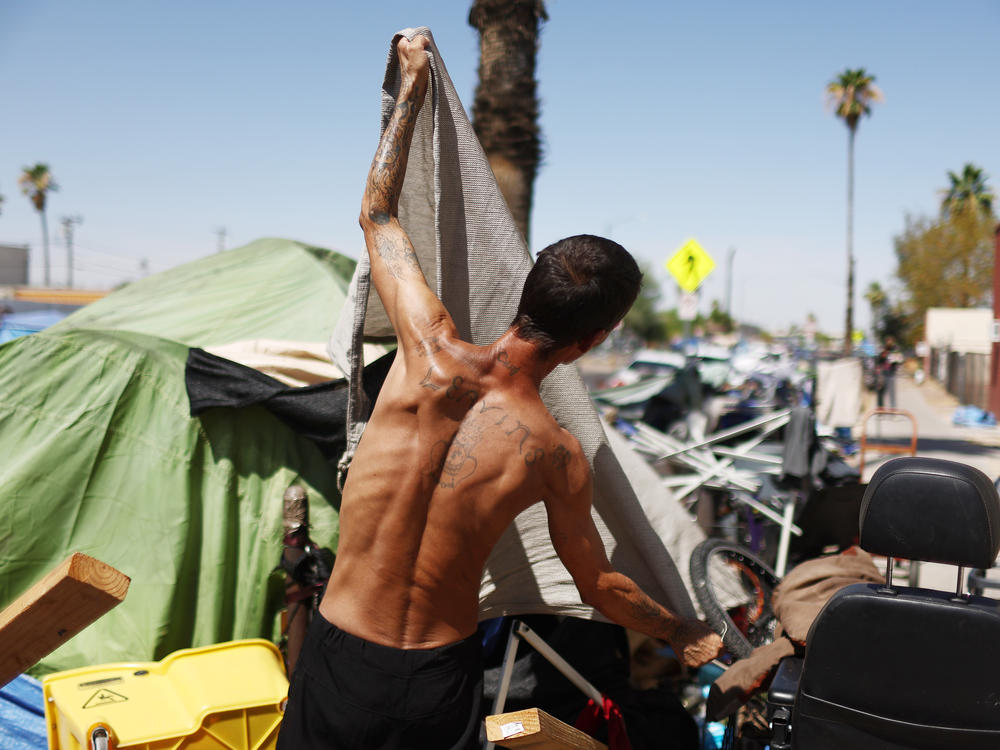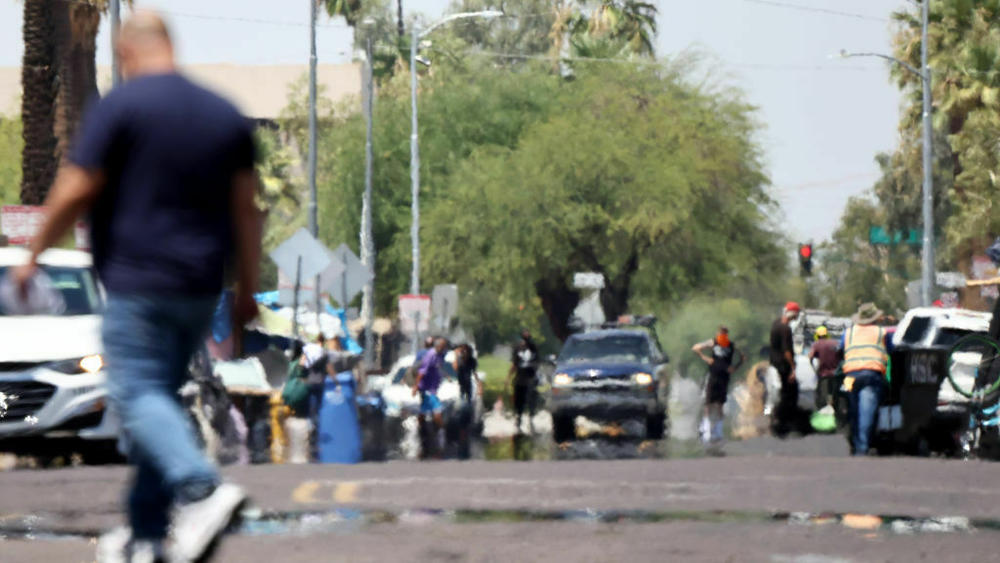Section Branding
Header Content
Phoenix melts in a record streak of days over 110 degrees. And it's not over yet
Primary Content
"Record breaking" loses some of its wow factor when that record just keeps getting broken. Tuesday marks 26 consecutive days in Phoenix, Az. with a temperature over 110 degrees.
Who are they?
- There are roughly 1.6 million people living in Phoenix, and nearly 5 million people in the greater Phoenix metro area.
- Phoenix is known for being hot, but this July has been distinct — not just for the top temperatures, but the consistency of this heatwave. July 2022 had an average temperature of 95.3. One forecast, as reported by The Washington Post, finds Phoenix could end this July with a record average temperature of 102.7.
What's the big deal? This kind of heat isn't just uncomfortable, it can be deadly.
- So far this year, 18 people have died from heat-associated deaths, and 69 more deaths are under investigation, according to Maricopa County's weekly heat report.
- "It feels like an oven," says Eric Brickley, of Feed Phoenix. The community organization has been setting up hydration stations around the city, delivering ice and water to the homeless population, and anyone who needs it. "It is basically the only thing that keeps someone from perishing. Some of the places people are living are so hot and deadly that without ice, even in the shade, they will die."
- A new study finds the heatwaves across the U.S. and Europe right now would be "virtually impossible" without the influence of climate change.
What are people saying? NPR's Juana Summers spoke with Phoenix Mayor Kate Gallego on Tuesday about the heatwave. Here's what she said.
On clearing out the city's largest homeless encampment:
Our priority is to get people into indoor shelter. Thanks to our partnership with the Biden administration, we now have hundreds of millions of dollars that we can put towards indoor air-conditioned shelters. So that is our top priority. We have a robust network of cooling centers — about 60 through 62 in our region — and those can be important. But my goal would be to get people inside an air-conditioned environment.
On protecting people working outside, like construction workers:
One of the things that we are going to mark for the first time this Thursday is the city is investing in container storage housing, which can be built indoors in air-conditioned environments and then installed on site using a crane. So it is much less exposure for our construction workers, and we're hopeful that with making more of the process indoors, they will be safer and better off.
So, what now? Mostly, just waiting for it to cool off.
- Gallego has also been calling on FEMA to add extreme heat to the list of "declared disasters."
- Gallego encouraged Phoenix residents to register themselves or loved ones for the Cool Callers program, where volunteers conduct check-ins for those who may be at risk for heat stroke, especially older residents.
Learn more:
- U.S., European heat waves 'virtually impossible' without climate change, study finds
- Phoenix fire captain discusses what it's like to work as the city breaks heat records
- What Phoenix's heat response director is doing to help keep people safe amid 110-degree temperatures
Copyright 2023 NPR. To see more, visit https://www.npr.org.


